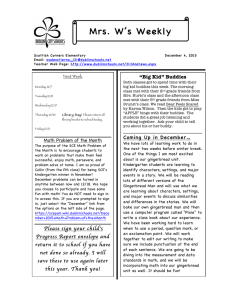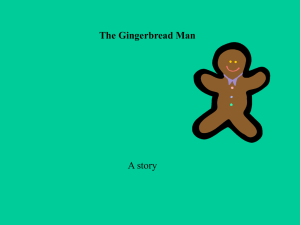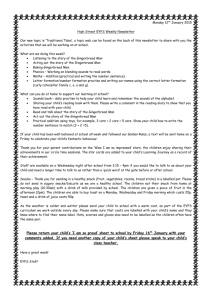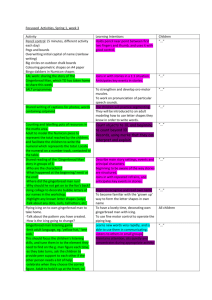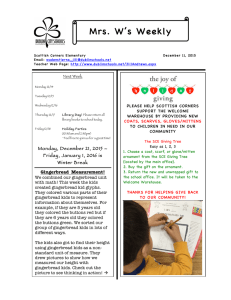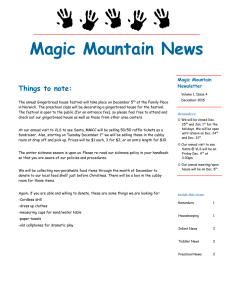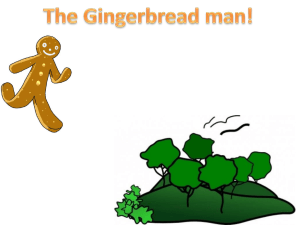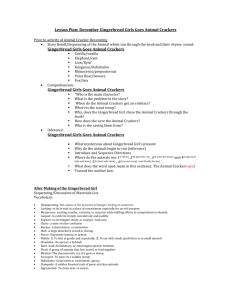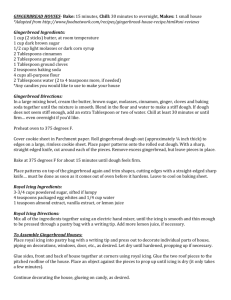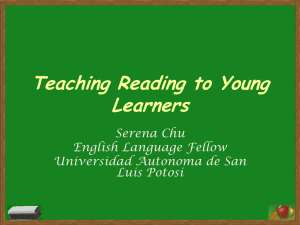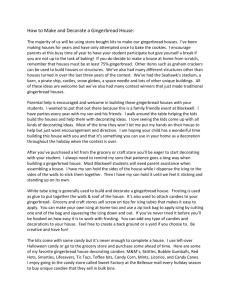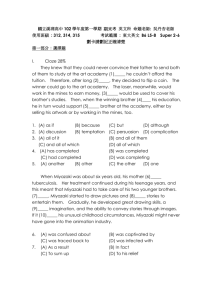KS1 Pathway 3
advertisement
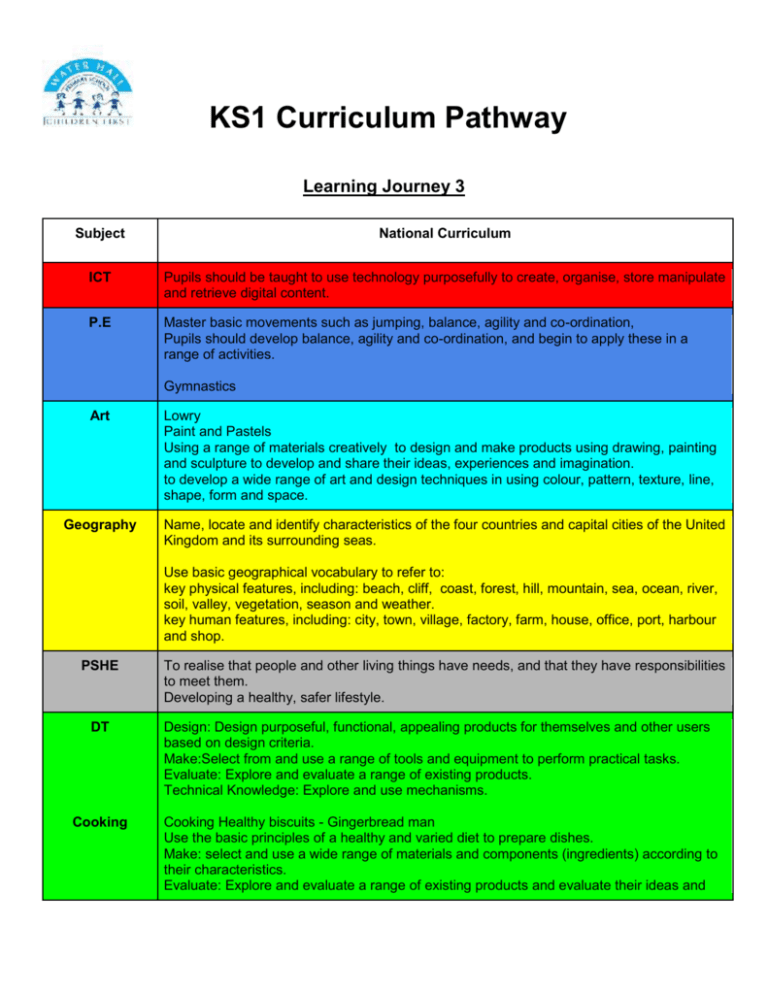
KS1 Curriculum Pathway Learning Journey 3 Subject National Curriculum ICT Pupils should be taught to use technology purposefully to create, organise, store manipulate and retrieve digital content. P.E Master basic movements such as jumping, balance, agility and co-ordination, Pupils should develop balance, agility and co-ordination, and begin to apply these in a range of activities. Gymnastics Art Geography Lowry Paint and Pastels Using a range of materials creatively to design and make products using drawing, painting and sculpture to develop and share their ideas, experiences and imagination. to develop a wide range of art and design techniques in using colour, pattern, texture, line, shape, form and space. Name, locate and identify characteristics of the four countries and capital cities of the United Kingdom and its surrounding seas. Use basic geographical vocabulary to refer to: key physical features, including: beach, cliff, coast, forest, hill, mountain, sea, ocean, river, soil, valley, vegetation, season and weather. key human features, including: city, town, village, factory, farm, house, office, port, harbour and shop. PSHE To realise that people and other living things have needs, and that they have responsibilities to meet them. Developing a healthy, safer lifestyle. DT Design: Design purposeful, functional, appealing products for themselves and other users based on design criteria. Make:Select from and use a range of tools and equipment to perform practical tasks. Evaluate: Explore and evaluate a range of existing products. Technical Knowledge: Explore and use mechanisms. Cooking Cooking Healthy biscuits - Gingerbread man Use the basic principles of a healthy and varied diet to prepare dishes. Make: select and use a wide range of materials and components (ingredients) according to their characteristics. Evaluate: Explore and evaluate a range of existing products and evaluate their ideas and KS1 Curriculum Pathway products against design criteria. Science Identify and name a variety of common animals that are birds, fish, amphibians, reptiles, mammals and invertebrates (animals found in the UK) Identify and name a variety of common animals that are carnivores, herbivores and omnivores. Describe and compare the structure of a variety of common animals (birds, fish, amphibians, reptiles, mammals and invertebrates, and including pets) Identify that most living things live in habitats to which they are suited and describe how different habitats provide for the basic needs of different kinds of animals and plants, and how they depend on each other Working scientifically : Asking simple questions and recognising that they can be answered in different ways, Identifying and classifying Using their observations and ideas to suggest answers to questions Gathering and recording data to help in answering questions Maths Revise measure from Learning Journey 2 Statistics - ask and answer simple questions by counting the number of objects in each category and sorting the categories by quantity (YR 2)Linked with Science(e.g.classify animals) Direction - describe position, direction and movement, including whole, half, quarter and three-quarter turns left and right, top, middle and bottom, on top of, in front of, above, between, around, near, close and far, up and down, forwards and backwards, inside and outside (YR 1) use mathematical vocabulary to describe position, direction and movement, including movement in a straight line and distinguishing between rotation as a turn and in terms of right angles for quarter, half and three-quarter turns (clockwise and anti-clockwise) (YR 2) lINKED with Geography (e.g. simple maps) Shape - Recognise and name common 2D and 3D shapes (YR 1) Identify and describe the properties of 2D and 3D shapes (YR 2) links with Art Measure (money) - recognise and use symbols for pounds (£) and pence (p); combine amounts to make a particular value find different combinations of coins that equal the same amounts of money solve simple problems in a practical context involving addition and subtraction of money of the same unit, including giving change (YR 2 ) LINKED WITH DT Possible areas to Information (science non- chronological report) KS1 Curriculum Pathway cover in Literacy: Instructions (DT) Narrative labels (geography) Story for Oral Retelling Cinderella Gingerbread Man Song to learn from sing-up My Bonnie Lies over the Ocean (Parks of the UK - Scotland) KS1 Curriculum Pathway Possible learning journey/ Ideas…. Look at where we live. Look at other countries in the U.K and use geographical vocabulary. Labelling different parts of the U.K and the geographical vocabulary. Maths - Time and direction. Discuss the different animals that live in the UK. Statistics of animals living in area - local study. Look at the types of painting produced by Lowry and the different backgrounds in the artwork. Link to Gingerbread Man/Cinderella story - travelling to different places. Children to make a presentation about on the countries within the UK or animals. Children to select and retrieve their own pictures. Link money to baking gingerbread men. buying products. Baking gingerbread men. Link to story or writing instructions. Links to next learning journey… How do we move around the UK? Look at how the gingerbread man/cinderella moved around - linked to Wright Brothers.
